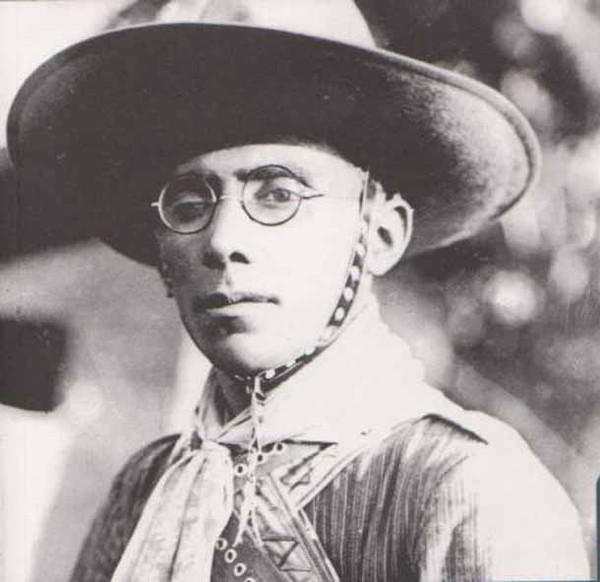
Lampião
BR
A.k.a. Virgulino Ferreira da Silva
"Captain" Virgulino Ferreira da Silva, better known as Lampião (more archaic spelling 'Lampeão', was the most famous bandit leader of the Cangaço. Cangaço was a form of banditry endemic to the Brazilian Northeast in the 1920s and 1930s. Lampião's exploits and reputation turned him into a 'folk hero'. Virgulino was born on June 7, 1897, near the village of Serra Talhada, on his father's 'ranch' named Passagem das Pedras in the semi-arid backlands (sertão) of the state of Pernambuco. He was the third of nine children of José Ferreira da Silva and Maria Lopes, a humble family of subsistence farmers. Until he was 21 years old, he worked hard herding his father's few cattle, sheep and goats, becoming a skilled rider and 'cowboy'. He was also an accomplished leathercraft artisan. Though he never attended school he was literate and used reading glasses—both quite unusual features for the rough and poor region where he lived. The backlands had little in the way of law and order, even the few police in existence were usually in the pocket of a local "Coronel" - a leading landowner who was also a regional political chief - and would usually take sides in any dispute. Indeed, the poorer portion of the backlands population were generally badly treated by the paramilitary police, and would often prefer the presence of bandits in their settlements over that of the police. In such a society disputes between neighbours could quickly escalate into violent feuding. Virgulino's family fell into a deadly feud with other local families. His father twice moved his family to avoid the escalating dispute, first to Nazaré, and then to Água Branca in the State of Alagoas. These moves proved to be fruitless as violence followed the family, with Virgulino and his brothers Antônio and Levino gaining reputations as troublemakers. Eventually José Ferreira was killed in a confrontation with the police on May 18, 1921. Virgulino sought vengeance and proved to be extremely violent in doing so. He became an outlaw, a cangaceiro, and was incessantly pursued by the police (whom he called macacos or monkeys). Virgulino had acquired the nickname 'Lampião' as early as 1921, allegedly because he could fire a lever-action rifle so fast, that at night it looked as though he was holding a lamp. Despite his history of brutal acts and savagery, there was enough in his undoubted courage, his many fights against heavy odds, his occasional acts of mercy and charity, his conventional piety and calculated courting of publicity to ensure that Lampião entered Brazilian folk-history as a hero. One of the more dispassionate analyses of Lampião concluded that, if he was a hero, he was an anarchist hero who forged a prominent place for himself in a society and political environment where people put their own interests above all other considerations. In 1957 the songs associated with Lampião's bandits were recorded, as "Cantigas de Lampião", recorded by Volta Sêca Joan Baez recorded a version of "Mulher Rendeira", renamed "O Cangaceiro", on her album Joan Baez/5 - released in October 1964. The lyrics refer directly to Lampião. The story of Lampião and Maria Bonita became the subject of innumerable folk stories, books, comics books, popular pamphlets (cordel literature), songs, movies, and a number of TV soap operas, with all the elements of drama, passion, and violence typical of "Wild West" stories. Capoeira culture honors his folk hero status in a verse of the quadra (call and response style song), 'Sim, Sim, Sim, Não, Não, Não'. Lampião was mentioned in the lyrics of "Ratamahatta", a song of Brazilian metal band Sepultura, from their Roots record.
